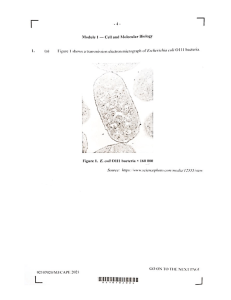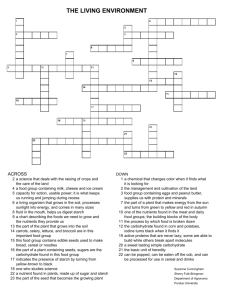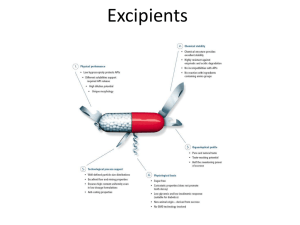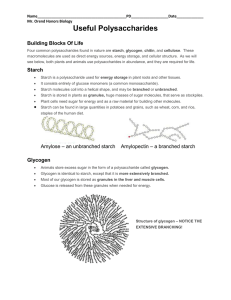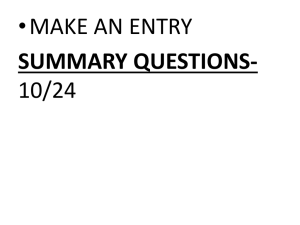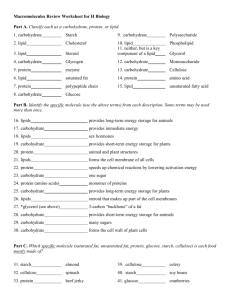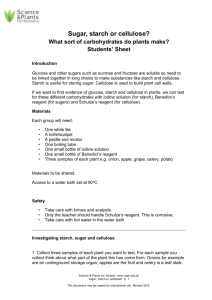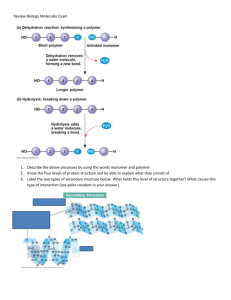TUTORIAL ON CARBOHYDRATES
advertisement
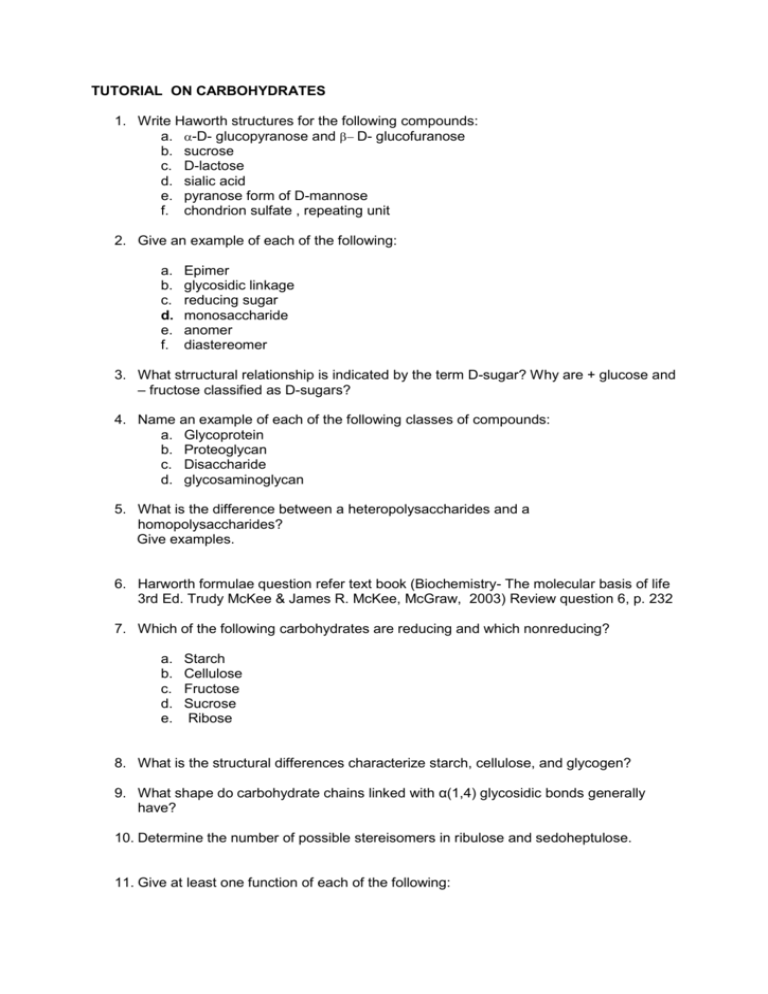
TUTORIAL ON CARBOHYDRATES 1. Write Haworth structures for the following compounds: a. -D- glucopyranose and D- glucofuranose b. sucrose c. D-lactose d. sialic acid e. pyranose form of D-mannose f. chondrion sulfate , repeating unit 2. Give an example of each of the following: a. b. c. d. e. f. Epimer glycosidic linkage reducing sugar monosaccharide anomer diastereomer 3. What strructural relationship is indicated by the term D-sugar? Why are + glucose and – fructose classified as D-sugars? 4. Name an example of each of the following classes of compounds: a. Glycoprotein b. Proteoglycan c. Disaccharide d. glycosaminoglycan 5. What is the difference between a heteropolysaccharides and a homopolysaccharides? Give examples. 6. Harworth formulae question refer text book (Biochemistry- The molecular basis of life 3rd Ed. Trudy McKee & James R. McKee, McGraw, 2003) Review question 6, p. 232 7. Which of the following carbohydrates are reducing and which nonreducing? a. b. c. d. e. Starch Cellulose Fructose Sucrose Ribose 8. What is the structural differences characterize starch, cellulose, and glycogen? 9. What shape do carbohydrate chains linked with α(1,4) glycosidic bonds generally have? 10. Determine the number of possible stereisomers in ribulose and sedoheptulose. 11. Give at least one function of each of the following: 12. The polymer chains of glycosaminoglycans are widely spread apart and bind large amount of water. a. What 2 functional groups of the polymer make this binding of water possible? b. What type of binding is involved? 13. In glycoproteins, what are the 3 amino acids to which the carbohydrate groups are linked? 14. Chondriotin sulfate chains have been linkened to a large fishnet, passing small molecules through their matrix but excluding large ones. Use the structure of chondrioitin sulfate and proteoglycans to explain tis analogy. 15. Define the term reducing sugar What structural feature does a reducing have? 16. Compare the structures of proteoglycans and glycoproteins. How are structural differences related to their functions? 17. What role is carbohydrate thought to play in maintaining glycoprotein stability? 18. How does the structure of cellulose differ from starch and glycogen? 19. Dertermine which of the following sugar pairs are enantiomers, diastereomers, epimers, or an aldose-kestose pair. a) D-erythrose and D-ribose b) D-glucose and D-mannose c) D-ribose and L-ribose d) D-allose and D-galactose e) D-glyceraldehyde and dihydroxyacetone
